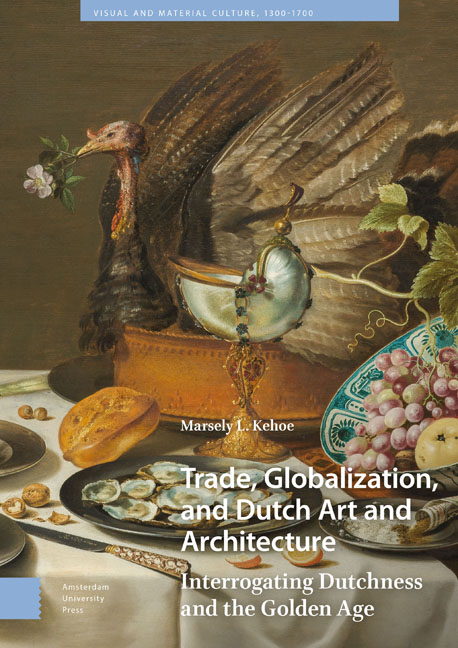Book contents
- Frontmatter
- Contents
- List of Illustrations
- 1 Introduction: Grasping at the Past
- 2 The Gilded Cage: Dutch Global Aspirations
- 3 Gathering the Goods: Dutch Still Life Painting and the End of the “Golden Age”
- 4 Dutch Batavia: An Ideal Dutch City?
- 5 Simplifying the Past: Willemstad’s Historic and Historicizing Architecture
- 6 Conclusion: The “Golden Age” Today
- Works Cited
- Acknowledgements
- Index
1 - Introduction: Grasping at the Past
Published online by Cambridge University Press: 13 February 2024
- Frontmatter
- Contents
- List of Illustrations
- 1 Introduction: Grasping at the Past
- 2 The Gilded Cage: Dutch Global Aspirations
- 3 Gathering the Goods: Dutch Still Life Painting and the End of the “Golden Age”
- 4 Dutch Batavia: An Ideal Dutch City?
- 5 Simplifying the Past: Willemstad’s Historic and Historicizing Architecture
- 6 Conclusion: The “Golden Age” Today
- Works Cited
- Acknowledgements
- Index
Summary
Abstract: The Dutch “Golden Age” is both a point of pride and a deeply contested concept, increasingly discussed in scholarship and in popular conversation. This introduction to the book explores how the “Golden Age” and art history are intertwined, both in the past and the present, as part of Dutch collective identity. Central to the chapter and the book are the notions first that the Dutch “Golden Age” was a period of global expansion, and second, that as the relationship to the seventeenth century has evolved over time, that the global and challenging aspects of this period have been deliberately forgotten.
Keywords: Golden Age, collective memory, identity, innocence, global, hybridity
Two important notions guide this book: 1) that the global reach of the early modern Netherlands was key to the flourishing of this new nation, and 2) that this global reach has been repeatedly and systematically forgotten by subsequent generations despite its importance for shaping Dutch cultural identity. The first notion has been well established in scholarship over the past few decades, by art historians, economic historians, and historians more generally. This idea has also received attention outside of academia in large part through popular art exhibitions that demonstrate the wide variety of global subject matter, objects, and materials that were acquired by seventeenth-century patrons and collectors, which have since found their way into public and private collections of European art today. However, this notion still has not reached the mainstream, either in today's Netherlands or elsewhere. Instead the Netherlands conjures quaint historical images of tulip fields, windmills, and wooden shoes, of townhouses along canals, essentially an idealized version of the historical landscape of the Netherlands. When the great Dutch institution, the Rijksmuseum, unveiled their newly renovated and reinstalled building in 2013, the artworks that told the story of this global reach so clearly (like room 2.9, which includes paintings of trading posts and merchants, an Indian-made inlaid wood cradle in European style, and trade goods from a Dutch East India Company shipwreck) were relegated to the corner galleries, making way for the traditional glorification of the favored seventeenth-century painters like Rembrandt, Vermeer, and Frans Hals, in the central Gallery of Honor.
- Type
- Chapter
- Information
- Trade, Globalization, and Dutch Art and ArchitectureInterrogating Dutchness and the Golden Age, pp. 15 - 38Publisher: Amsterdam University PressPrint publication year: 2023



